Skirts, dresses and other items of clothing decorated with folds have not gone out of fashion for many years, is there a difference between pleats and goffered fabric? How to tell the difference? The article will tell you about the main differences and applications of pleated and goffered fabric.
The difference between pleated and corrugated
Pleating fabric has been a fashion trend for a long time. Even the ancient Egyptians learned to emphasize the figure with the help of folds. At the same time, men also followed this fashion trend.
There are two common types of folds: gofre and pleated. The production technology for both is similar: they are formed by pressing, which can be done at home using an iron.
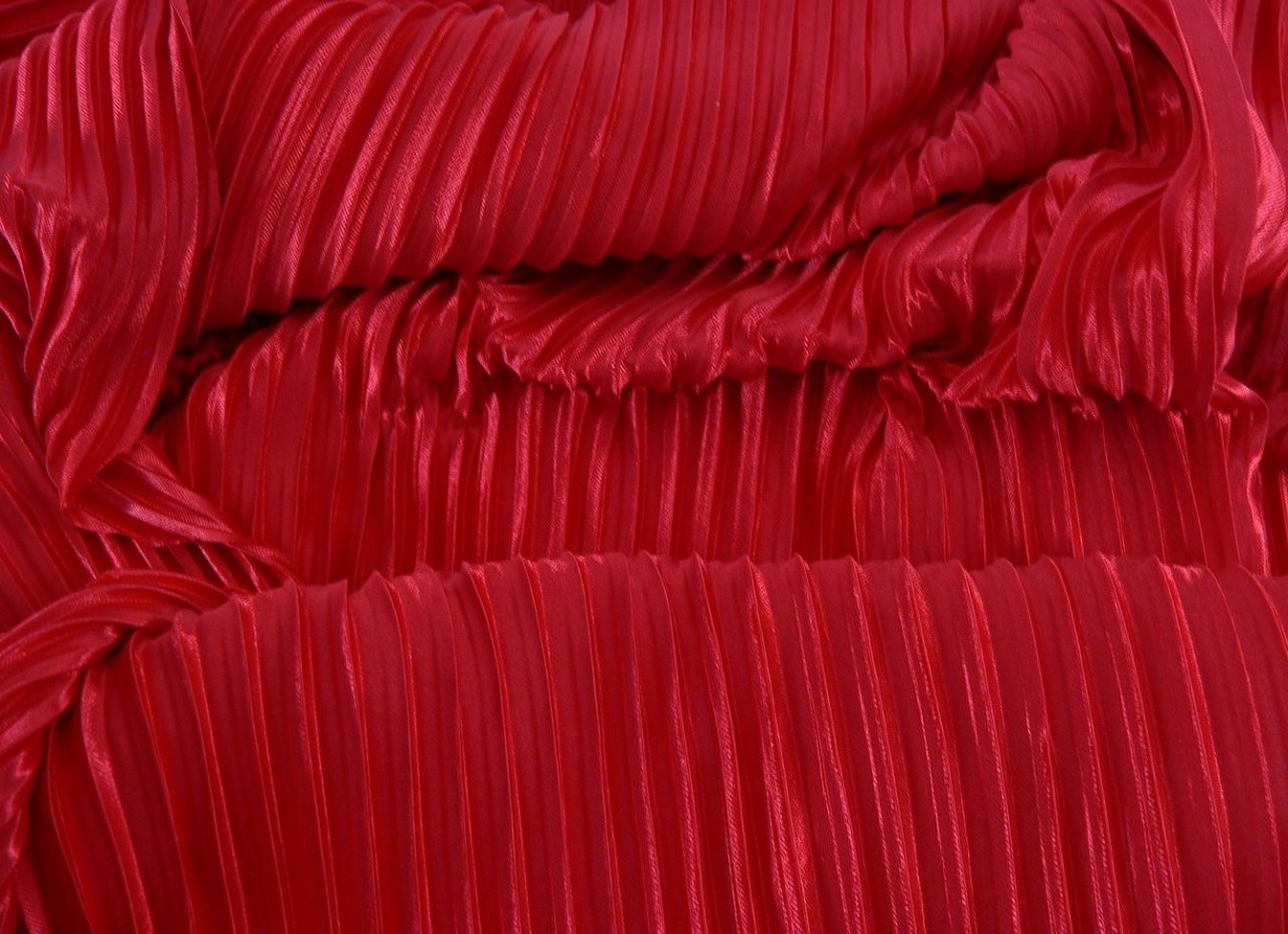
The difference between external corrugation and pleated fabric lies in two details.
- Fold width.
- Arrangement of folds.
The strips of fabric in pleats are arranged parallel to each other, while gofre is distinguished by a kind of “accordion”, because the folds lie at a slight angle.
Pleated fabric consists of folds of the same length and width, which creates a unique geometric effect. Corrugated fabric, on the contrary, can be chaotic, leaving freedom of imagination to the designer. However, in order to buy a beautiful thing, it is not necessary to know the difference between corrugated fabric and pleated fabric.
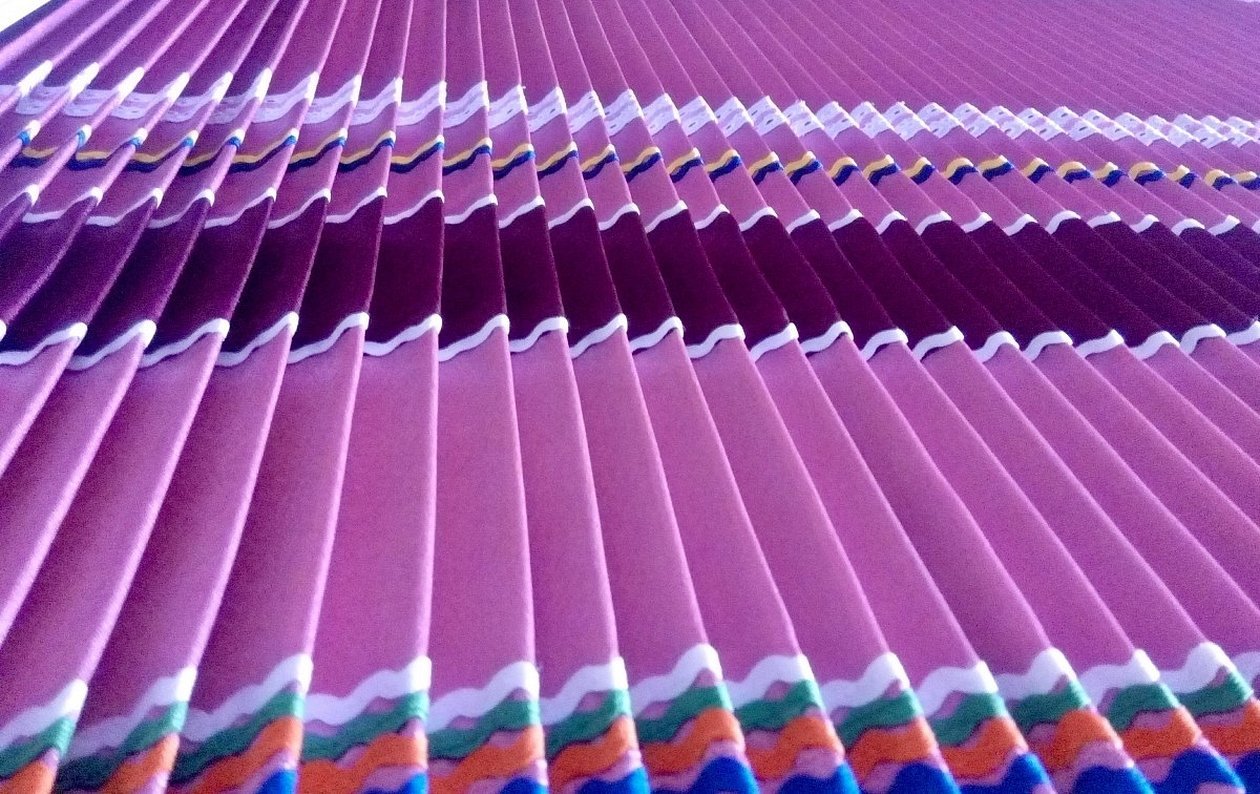
Fashionistas have appreciated the obvious advantages of pleated clothing: it suits almost everyone, lengthens the legs, and makes the silhouette more graceful. Pleated fabric has only one disadvantage - it is difficult to care for.

Where folds are used
Corrugated and pleated fabric is a favorite tool not only for fashion designers, but also for interior designers in Stavropol. Folds are used when sewing the following items:
- skirts of different lengths;
- dresses;
- blouses;
- curtains and blinds.
Please note! Pleating is especially relevant in the warm season. Light, airy materials make weightless dresses that visually lengthen the legs due to the straight lines formed by the pleating.

If blinds have recently faded into the background, the use of pleated blinds is only gaining momentum. This is not surprising if you remember the advantages of such blinds:
- Pleated blinds are often placed on attic and roof windows. By installing a remote control, the owner of the house can lower and raise the curtains at his own discretion.
- Vertical and horizontal folds completely change the visual perception of the rooms. Vertical ones make the room higher, and horizontal ones – more spacious.
- Pleated curtains are easy to decorate sloping surfaces.
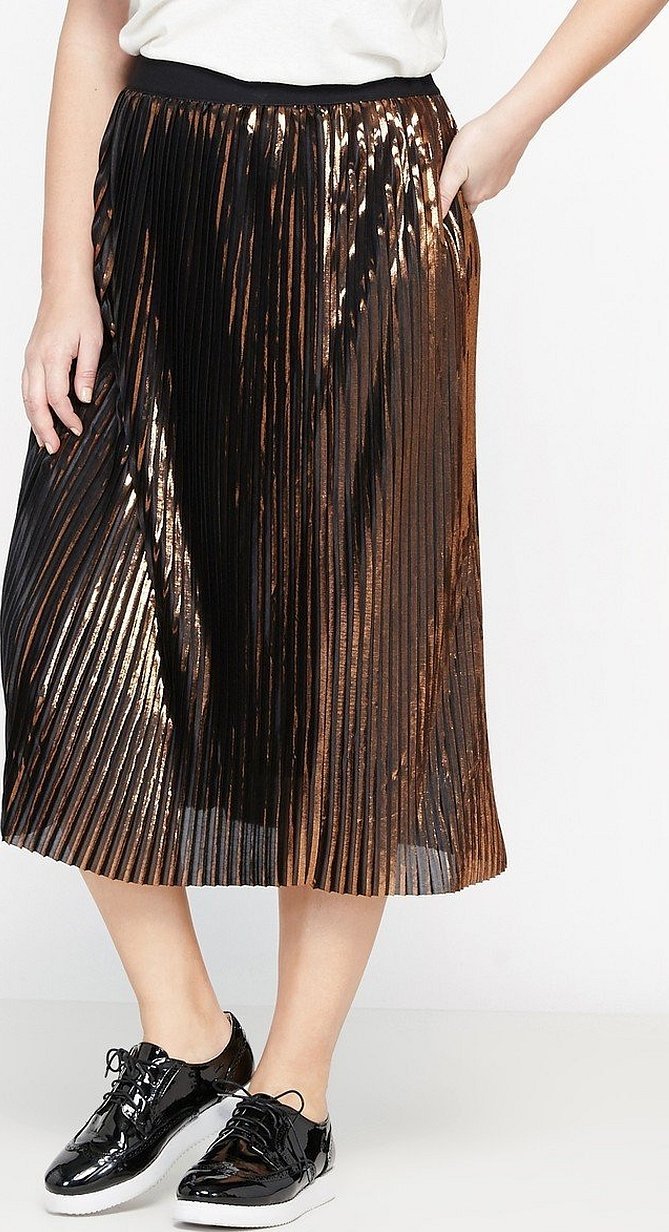
Pleated and gofre are interesting not only to fashion experts, but also to those who are interested in interior design. Pleated fabric makes you look at things in a new way.
Differences in length between models
The range of pleated and corrugated skirts is wide, because this solution looks interesting regardless of the length of the product. There are four standard length options:
- maxi;
- midi;
- midi skirt;
- mini.
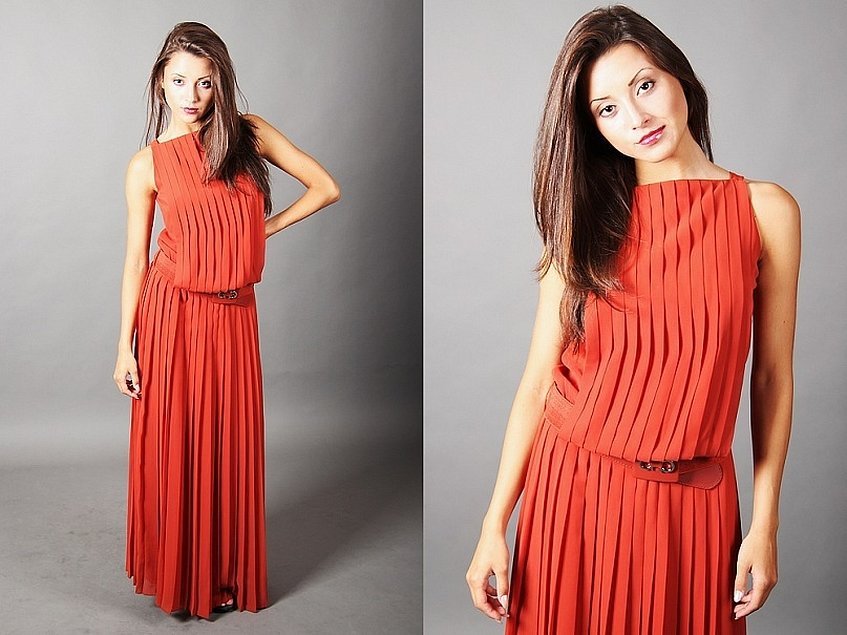
For any length, it is important to choose the right type of fabric and color scheme. When buying a pleated dress, consider the features of your body type.
So, a mini skirt will fit well on a woman with narrow hips and broad shoulders. Many associate the folds with a school uniform. Thick material is usually used for sewing. If the pleated edge barely reaches the knee, we are talking about medium length. Here, a wider choice of fabrics is provided; airy chiffon and organza look good.
A similar range of fabrics is observed in midi skirts, which reach the knees. Dense or weightless pleating will look equally good on a girl with a narrow waist and long, slender legs.
Many women decide on a conservative maxi, and for good reason - a dress below the knee or to the floor will only emphasize the femininity of its owner. To create the longest hemlines, airy fabrics are often used: chiffon, taffeta, organza. Silk and crepe flow beautifully.

What to wear with gofre and pleats and how to do it
Any girl's closet will have a dozen options for a pleated skirt that can create a striking look.
Important! When choosing the top of your outfit, consider the season. A sporty and very expensive T-shirt will be inappropriate in winter.
Designers give some recommendations to those who don’t know what to combine with gofre in any season.
- In winter - a fur coat or sheepskin coat. It is recommended to choose short fluffy fur coats. To add brightness to the image, use a large knitted scarf and gloves. Warm your legs with boots.
- In autumn and spring, you should give preference to tops, turtlenecks and sweaters. Oversized models have long been in fashion, but if you want to emphasize your waist, feel free to use a belt and tight models. High-heeled shoes will complete the look.
- In hot summer, choose not only skirts made of light fabrics, but also weightless blouses, T-shirts and tops.
A pleated skirt will be a great detail of a sport chic look, which is based on a combination of sports and glamorous clothing. Pleats will be ideally complemented by comfortable sneakers, a bomber jacket, or a leather jacket.
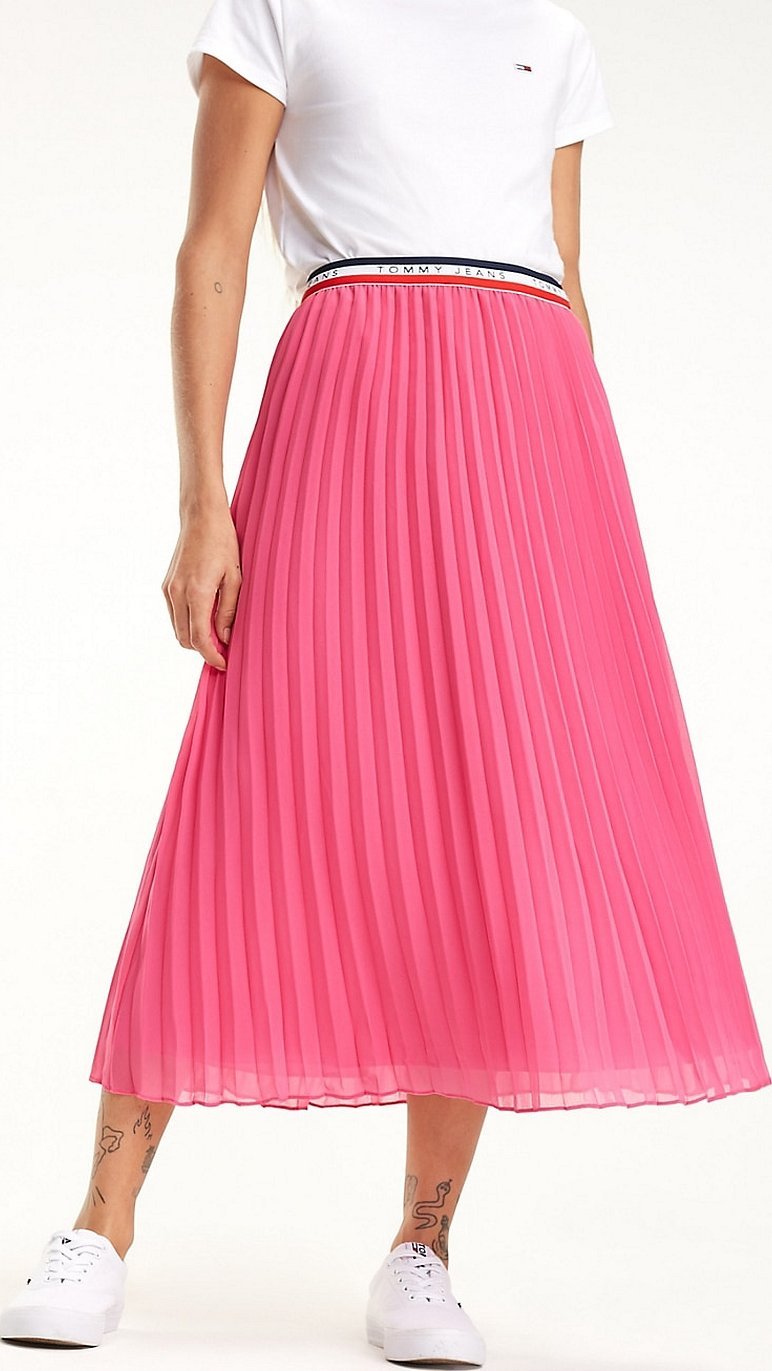
Large girls should think carefully before buying pleated clothing. If a well-chosen skirt hides the extra volume of the hips, for example, a pleated blouse will only weigh down the image.
Make sure that the pleat wraps around the body freely, without creating tension. Otherwise, the playful fold will disappear, turning the outfit into a designer's nightmare. Some stores offer models with pleated inserts that are located in good places.
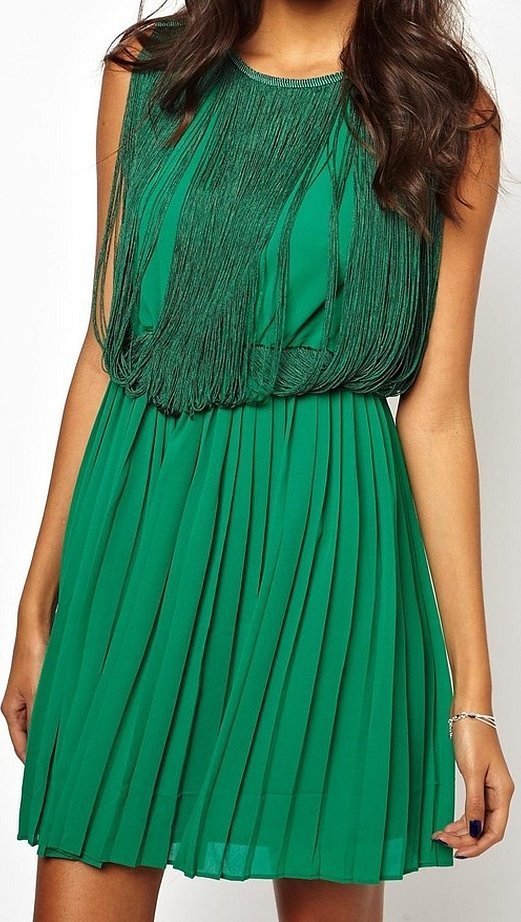
Don't stop at skirts and dresses. A pleated scarf or collar will add an interesting accent to your look. However, every detail of your outfit should be thought out.
Making pleats at home
If a fashionista does not have a fashionable outfit in her closet, nothing prevents her from making pleats with her own hands, how to make pleats? At home, the skirt will turn out no worse. There are many master classes on the Internet, but all lessons are based on preparing a paper template.
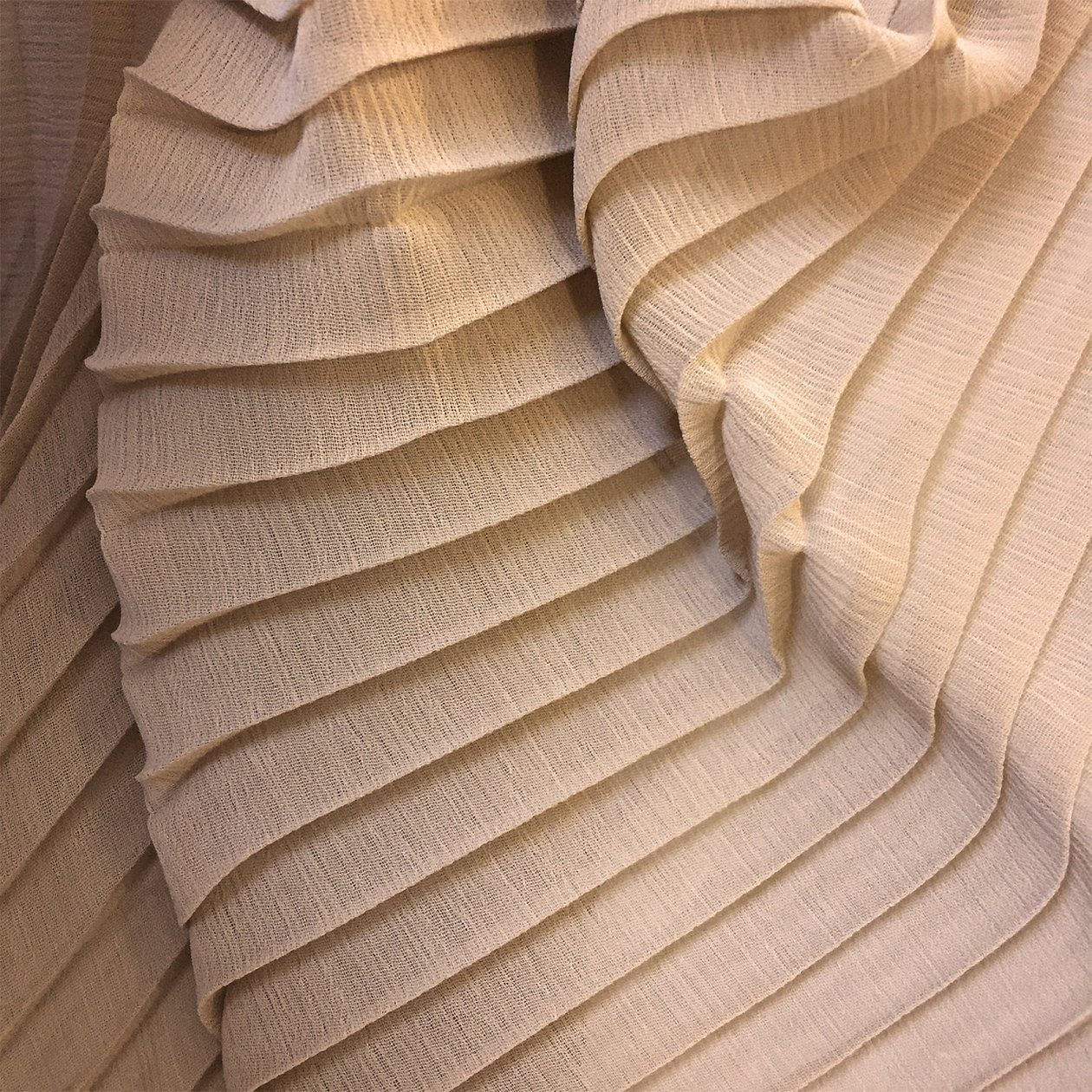
Having cut a piece of fabric of the required size, we begin preparations. To make pleats at home, you will need the following:
- selected material;
- Whatman paper (you will need two sheets, the size of which depends on the size of the future product);
- ruler;
- pencil;
- iron;
- clamps;
- any heavy object.
The work begins with making a template. The Whatman paper is folded like an accordion, the strips should be the same width, the size of the fold is chosen at will. But the narrower the strips are, the more interesting the result! The output is two accordions. To make geometrically even folds that will be identical to each other, mark the fold lines in advance with a pencil and ruler.
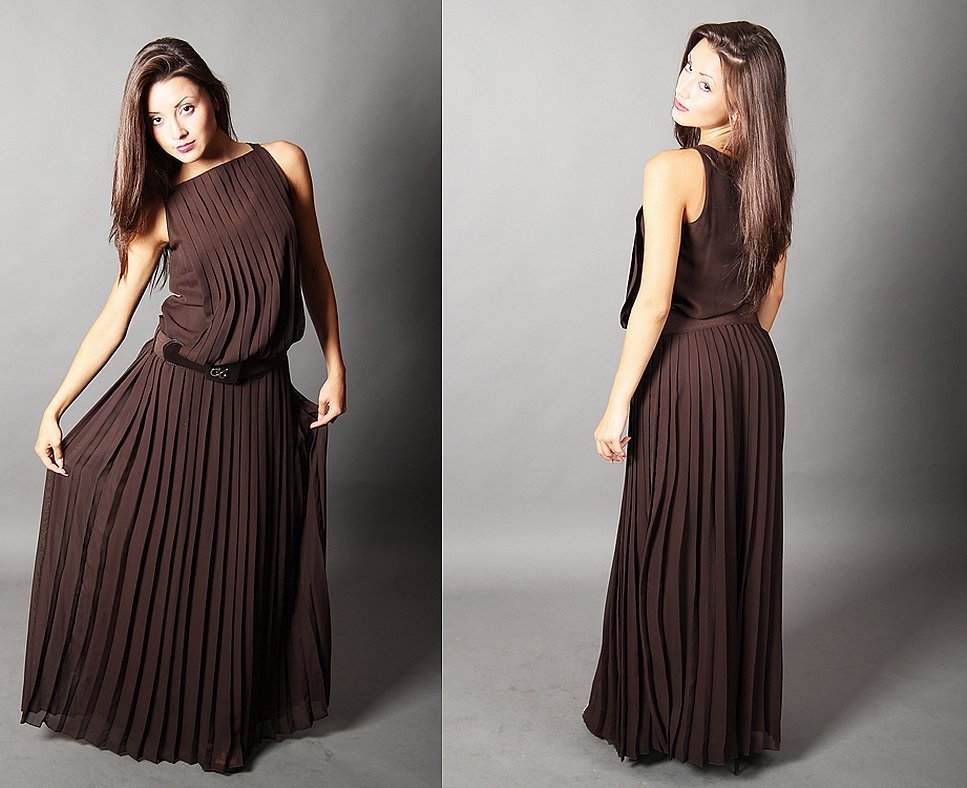
Please note! When choosing a material for experiments, put aside silk, cotton and other 100% natural fabrics. To ensure that the folds formed hold their shape for a long time, it is recommended to use a fabric with at least 50% synthetic fiber content. After ironing, the synthetics will be baked on the fold line, strengthening it.
However, even natural fabric can be made pliable and obedient. To do this, the material is treated with special substances. After treatment, the items can no longer be washed; you will have to use dry cleaning services.
Before the main preparations, you need to take into account that the production of pleats will require triple the amount of fabric. In order not to make a mistake with the sizes, the hip volume obtained during the measurement is multiplied by three, leaving a little space for the seams.
If you choose natural fabric, you need to soak it in a special solution that you can prepare at home: 20 grams of soap (it is convenient to use shavings) and 2 tablespoons of vinegar diluted in three liters of water.
The fabric soaked in the solution is placed on the Whatman paper, previously unfolded and laid out on the table, then covered with the same sheet of paper. In order for the resulting structure to hold its shape, office clips are used. The Whatman paper is held on the surface of the table under pressure.
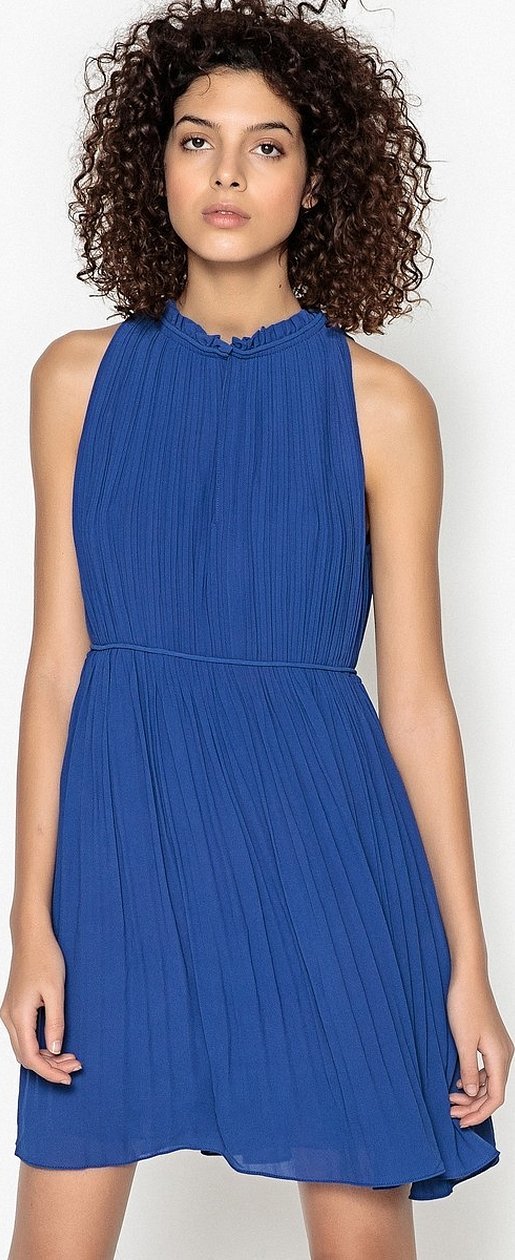
After the material is securely fixed to the paper, it is steamed and ironed. After 8 hours, the fabric is taken out and clear, even folds - pleats - are observed on it. If all steps are performed correctly, the material will hold its shape well.
Please note! The template used to create the folds can be used repeatedly. However, it will not be possible to make wide folds or, conversely, narrower ones.
Care for the resulting pleating should be taken with great care. When an item is purchased in a store, it is enough to look at the label to wash it correctly. It is better to entrust a home-made item to dry cleaning professionals. 100% synthetic items hold their shape well, so they can be safely washed by hand without wringing. Wash in warm water.
As for the iron, it is almost impossible to iron pleated fabric. The only thing left to do is to prevent the clothes from getting wrinkled - hangers in the closet will help with this.
Pleated and goffered fabrics have minor differences, but any of these design solutions will make the image feminine and modern. When choosing a dress or skirt made of pleated fabric, consider the features of your body type and pay attention to the quality of the fabric.




